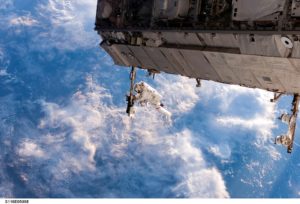I apologize to my fans for failing to post for so long. I have been working on edits for my first book, Trial By Error, to be released some time later this year.
Inspired by Star Wars and many other galactic-spanning science fiction stories, my book will involve routine travel among the stars. Meanwhile, back on the real planet Earth, our species hasn’t even made it to the nearest planet in our own solar system. I find it heartening that NASA is at least working hard toward that goal, though unfortunately, I may not live to see them achieve it. The current long-range plan is to have humans on Mars by some time in the 2030s.
NASA has laid out a three-stage plan for developing the technology and systems necessary to carry us to our nearest planetary neighbor. Stage 1 is “Earth Reliant” testing aboard the International Space Station (ISS). This stage is called Earth reliant because travel can be accomplished between the earth and the ISS within a matter of hours. Since 2000, NASA has been testing:
Human health and behavioral research Advanced communications systems
Material flammability tests Extravehicular operations
Mars mission class environmental control and life support systems 3-D printing
Material handling tests for in-situ resource utilization (ISRU) demonstrations


The ISS has already provided critical insights into the effects of long-term micro-gravity on the human body and spurred new developments in suits and tools that allow astronauts to spend longer periods outside their spacecraft. And haven’t we all had fun learning about what we can do with 3-D printers?
The second phase, “The Proving Ground, which I will discuss in more detail in my next blog, involves mounting missions to “cislunar” space—the area in the vicinity of the moon. Missions during the second phase will be designed to test the abilities and limits of humans and technology beyond earth’s protective sphere.
The third and final phase, called “Earth Independent,” will build on what we learn on the ISS and in cislunar space to enable human missions to the Mars vicinity, including the Martian moons, and eventually the Martian surface.
It seems so easy in science fiction. Why does it have to be so hard in reality?
